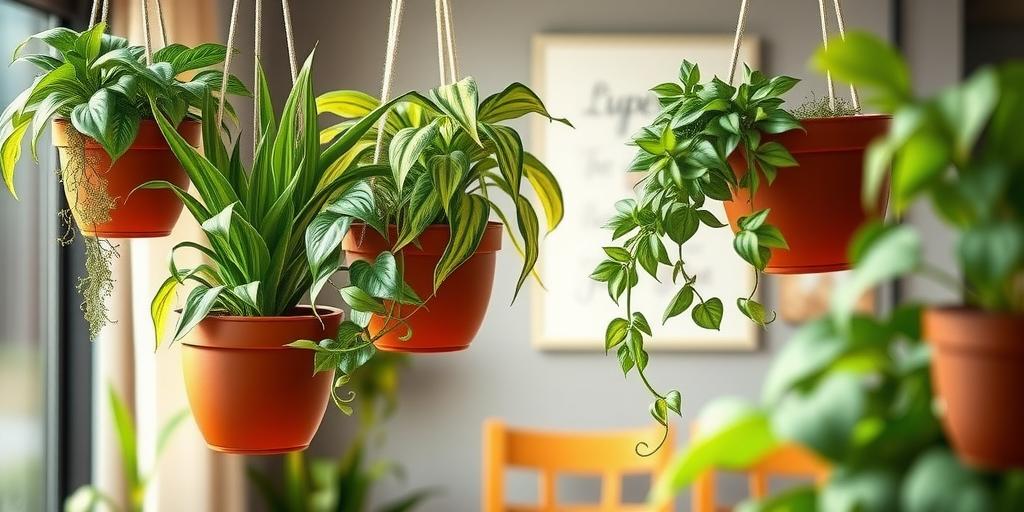
The Ultimate Guide to Watering Hanging Plants for Optimal Growth (2025)
Discover the best practices for watering hanging plants to ensure lush, healthy growth! Learn how often to water, signs of overwatering, and expert tips for thriving indoor and outdoor hanging plants.
Introduction
Did you know that over 50% of hanging plant failures are due to improper watering? Whether you’re a beginner or a seasoned plant parent, mastering the art of watering hanging plants can make all the difference in their health and beauty. Hanging plants add a touch of greenery to any space, but their unique positioning means they dry out faster—or sometimes stay too wet. In this guide, we’ll walk you through everything you need to know to keep your hanging plants thriving, from frequency to techniques and troubleshooting common issues. Let’s dive in!
Why Proper Watering is Crucial for Hanging Plants
Hanging plants face unique challenges compared to their ground-level counterparts. Because they’re suspended, water drains faster, and their roots have limited space to spread. If you don’t water them correctly, you risk two extremes: root rot from excess moisture or dehydration from drying out too quickly.
Proper hydration isn’t just about survival—it directly impacts foliage growth and flowering. A well-watered hanging plant will have lush, vibrant leaves and, if it’s a flowering variety, more consistent blooms. On the other hand, inconsistent watering leads to stress, causing leaves to drop or turn brown at the edges.
How Often Should You Water Hanging Plants?
There’s no one-size-fits-all answer—watering frequency depends on several factors:
-
Light exposure: Plants in bright, direct sunlight dry out faster than those in shade.
-
Humidity levels: High humidity slows evaporation, while dry air speeds it up.
-
Plant type: Succulents like string of pearls need less water than thirsty ferns or pothos.
General Guidelines for Common Hanging Plants
-
Pothos: Water when the top 1-2 inches of soil feel dry (usually every 5-7 days).
-
Ferns: Keep soil consistently moist but not soggy (every 3-4 days in warm weather).
-
Spider plants: Water when the top inch of soil is dry (about once a week).
Signs Your Plant Needs Water
-
Wilting or drooping leaves
-
Dry, crumbly soil pulling away from the pot edges
-
Yellowing leaves (though this can also signal overwatering)
Best Watering Techniques for Hanging Plants
The Soak-and-Drain Method
Instead of lightly sprinkling water, soak the soil thoroughly until water runs out of the drainage holes. This ensures the roots get enough moisture without leaving excess water sitting at the bottom. For hanging plants, take them down or use a long-spout watering can to avoid spills.
Self-Watering Pots: A Game-Changer?
Self-watering pots with built-in reservoirs are great for busy plant owners. They provide consistent moisture and reduce the risk of over/underwatering. However, they’re not ideal for plants that prefer to dry out between waterings, like succulents.
Misting vs. Bottom Watering
-
Misting helps with humidity-loving plants (e.g., ferns) but doesn’t replace proper watering.
-
Bottom watering (placing the pot in a tray of water) encourages deep root growth but may not work well for compact hanging planters.
Choosing the Right Water for Your Hanging Plants
Tap Water vs. Filtered/Rainwater
-
Tap water is convenient but may contain chlorine or fluoride, which some plants (like calatheas) dislike.
-
Filtered or rainwater is softer and free of chemicals, making it ideal for sensitive plants.
Water Temperature Matters
Always use room-temperature water. Cold water can shock the roots, while hot water may damage them.
Adding Nutrients
During the growing season (spring/summer), mix a balanced liquid fertilizer into your watering routine every 2-4 weeks. In winter, most plants need less frequent feeding.
Common Watering Mistakes to Avoid
Overwatering vs. Underwatering
-
Overwatered plants have yellow leaves, mushy stems, and a foul smell from the soil.
-
Underwatered plants have dry, crispy leaves and soil that’s hard to the touch.
The Importance of Drainage Holes
Without drainage, water pools at the bottom, leading to root rot. Always use pots with holes, and empty the saucer after watering.
Letting Plants Sit in Excess Water
Even with drainage, leaving a plant in a water-filled saucer is a recipe for disaster. After soaking, tip out any standing water to prevent soggy roots.
Seasonal Watering Adjustments for Hanging Plants
Summer vs. Winter Watering
-
Summer: Plants dry out faster due to heat and active growth. Check soil moisture more often.
-
Winter: Growth slows, so reduce watering frequency to prevent root rot.
Indoor Heating and AC Effects
-
Heating dries the air, increasing water needs.
-
AC can create cooler, less evaporative conditions, meaning less frequent watering.
Humidity Changes
In dry winter months, group plants together or use a pebble tray to boost humidity. In humid summers, ensure proper airflow to prevent mold.
Troubleshooting Watering Issues
Reviving Overwatered or Underwatered Plants
-
Overwatered: Stop watering, repot in fresh soil, and trim rotten roots.
-
Underwatered: Soak the pot in water for 30 minutes, then resume a regular schedule.
Dealing with Moisture-Related Pests
-
Fungus gnats thrive in wet soil. Let the soil dry out and use sticky traps.
-
Mold on soil? Scoop it off and improve airflow.
Repotting vs. Adjusting Watering
If your plant constantly dries out too fast or stays soggy, it may need a larger pot (for more soil) or a better-draining mix. Otherwise, tweak your watering routine first.
Conclusion
Watering hanging plants may seem tricky at first, but with the right knowledge, you can keep them flourishing year-round! Remember to adjust for plant type, season, and environmental factors, and always check the soil before reaching for the watering can. Ready to transform your hanging plants into lush, vibrant showstoppers? Start applying these tips today and watch them thrive!
